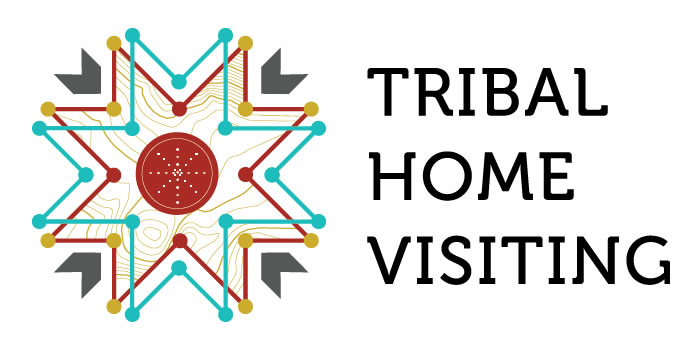Form QPR Tribal MIECHV Quarterly Performance Report
Tribal Maternal, Infant, and Early Childhood Home Visiting Program Data Reports: Demographic and Service Utilization, Grantee Performance Measures and Quarterly Performance Reports
THV QPR Form 2023_FINAL 04.10.2023
Tribal MIECHV Quarterly Performance Report
OMB: 0970-0614

Tribal Maternal, Infant, and
Early Childhood
Home Visiting Program
Data Reports:
Quarterly Performance Data Report
+ OMB
Control No,: Expiration
Date: xx/xx/xxx
PAPERWORK REDUCTION ACT OF 1995 (Pub. L. 104-13) STATEMENT OF PUBLIC BURDEN: Through this information collection, ACF is gathering information to report activities associated with grants to the Maternal, Infant, and Early Childhood Home Visiting (MIECHV) program. The purpose of this information collection is to submit quarterly data to HHS. Public reporting burden for this collection of information is estimated to average 10 hours annually per grantee, including the time for reviewing instructions, gathering and maintaining the data needed, and reviewing the collection of information. This is a collection of information through Section 511 of Title V of the Social Security Act. An agency may not conduct or sponsor, and a person is not required to respond to, a collection of information subject to the requirements of the Paperwork Reduction Act of 1995, unless it displays a currently valid OMB control number. The OMB # is XXXX and the expiration date is xx/xx/xxxx.
TRIBAL MATERNAL, INFANT, AND EARLY CHILDHOOD HOME VISITING PROGRAM
QUARTERLY PERFORMANCE DATA REPORT
TRIBAL HOME VISITING REPORTING: Quarterly Performance Data Report
Tribal Maternal, Infant, and Early Childhood Home Visiting (MIECHV) grantees are required to submit the information outlined below on a quarterly basis.
Quarterly reporting periods are defined as follows. Reports are due 30 days after the end of each reporting period:
Q1 - October 1-December 31;
Q2 - January 1-March 31;
Q3 – April 1-June 30;
Q4 – July 1-September 30
Definitions for key terms are included in Appendix A. Please carefully consult key term definitions before completing this report
Grant Number(s): ________________________________
Table 1: Program Capacity
Column A |
Column B |
Column C |
Column D |
Column E |
Number of New Households Enrolled |
Number of Continuing Households |
Current Caseload (A+B) (Auto-Calculate) |
Maximum Service Capacity |
Capacity Percentage (C÷D) (Auto-Calculate) |
|
|
|
|
|
Table 2: Family Engagement
Column A |
Column B |
Column C |
Column D |
Column E |
Column F |
Number of Households Currently Receiving Services |
Number of Households who Completed Program |
Number of Households who Stopped Services Before Completion |
Number of Households Enrolled But Not Currently Receiving Services/ Other |
Total (A+B+C+D) (Auto-Calculate) |
Attrition Rate (C÷E) (Auto-Calculate) |
|
|
|
|
|
|
Table 3: Staff Vacancies
Column A |
Column B |
Column C |
Column D |
Column E |
Number of Vacant MIECHV Home Visitors |
Number of Vacant MIECHV Project Directors/ Managers/ Coordinators |
Number of Vacant MIECHV Data/ Evaluation Staff |
Number of Vacant MIECHV Project Support Staff |
Number of MIECHV Staff Vacancies (A+B+C+D) (Auto-Calculate) |
|
|
|
|
|

Appendix A: Definitions of Key Terms for the Quarterly Performance Data Report
Capacity Percentage: Capacity percentage is a calculated indicator that results from dividing the current caseload by the maximum service capacity and multiplying by 100.
Completed Program: The number of households who completed the program refers to families who have completed the program or transitioned to another program according to home visiting model-specific definitions and criteria during the quarterly reporting period.
Continuing Household: A household, including a pregnant participant or caregiver, who were actively enrolled in the home visiting program prior to the beginning of the quarterly reporting period, continued enrollment through the reporting period, and had at least one home visit during the quarter. This includes any participants who had been enrolled in any prior quarterly reporting period, became inactive, and then enrolled again in the quarter. The household may include multiple caregivers depending on model-specific definitions.
Current Caseload: The number of households actively enrolled at the end of the quarterly reporting period. All members of one household represent a single caseload slot.
Currently Receiving Services: The number of households currently receiving services refers to households that received at least one home visit during the reporting period and are participating in services at the end of the quarterly reporting period.
Enrolled But Not Currently Receiving Services/Other: refers to those households that do not fall into the previous categories and may include unreachable participants (e.g., the family is not regularly participating but did not disenroll nor respond to outreach attempts made by home visiting program staff).
Maximum Service Capacity: The highest number of households that could potentially be enrolled at the end of the quarterly reporting period if the program were operating with a full complement of hired and trained home visitors.
Note: The maximum service capacity is equivalent to the caseload of family slots indicated in your approved implementation plan.
Caseload of Family Slots: The highest number of families (or households) that could potentially be enrolled at any given time if the program were operating with a full complement of hired and trained home visitors. Family slots are those enrollment slots served by a trained home visitor implementing services with fidelity to the model for whom at least 25% of their personnel costs (salary/wages including benefits) are paid for with MIECHV funding. All members of one family or household represent a single caseload slot. The count of slots should be distinguished from the cumulative number of enrolled families during the grant period.
New Household: A household, including a pregnant participant or caregiver, who enrolls during the quarter, is enrolled on the last day of the quarter, and has received at least one home visit during the quarter. The household may include multiple caregivers depending on model-specific definitions.
Staff Vacancies: A headcount of all staff positions that were vacant at the end of the reporting period, regardless of when the position became vacant.
Home Visitors: A home visitor employed or contracted by the Tribal MIECHV program, who receives 25% or more of his/her personnel costs (salary/wages including benefits) paid for with Tribal MIECHV funding.
Project Directors/Managers/Coordinators: Staff that play a key oversight role for the Tribal MIECHV grant, directly employed or contracted by the grantee, regardless of the percentage of their personnel costs paid for with Tribal MIECHV funding.
Data/Evaluation Staff: Staff involved in data entry support, reporting and/or evaluation as part of the Tribal MIECHV grant, directly employed or contracted by the grantee, regardless of the percentage of their personnel costs paid for with Tribal MIECHV funding.
Project Support Staff: All other positions that play a supportive role to the Tribal MIECHV grant, directly employed or contracted by the grantee, regardless of the percentage of their personnel costs paid for with Tribal MIECHV funding but not paid for by organization indirect costs, and do not fall under “Home Visitor,” “Project Directors/Managers/Coordinators,” and “Data/Evaluation Staff.” These positions could include administrative support staff or consultants (e.g., reflective supervision, clinical supervision, infant and early childhood mental health consultants).
Stopped Services before Completion: The number of households who stopped services before completion refers to households who left the program or were lost to follow-up for any reason prior to completion.
| File Type | application/vnd.openxmlformats-officedocument.wordprocessingml.document |
| Author | Department of Health and Human Services |
| File Modified | 0000-00-00 |
| File Created | 2023-07-29 |
© 2025 OMB.report | Privacy Policy